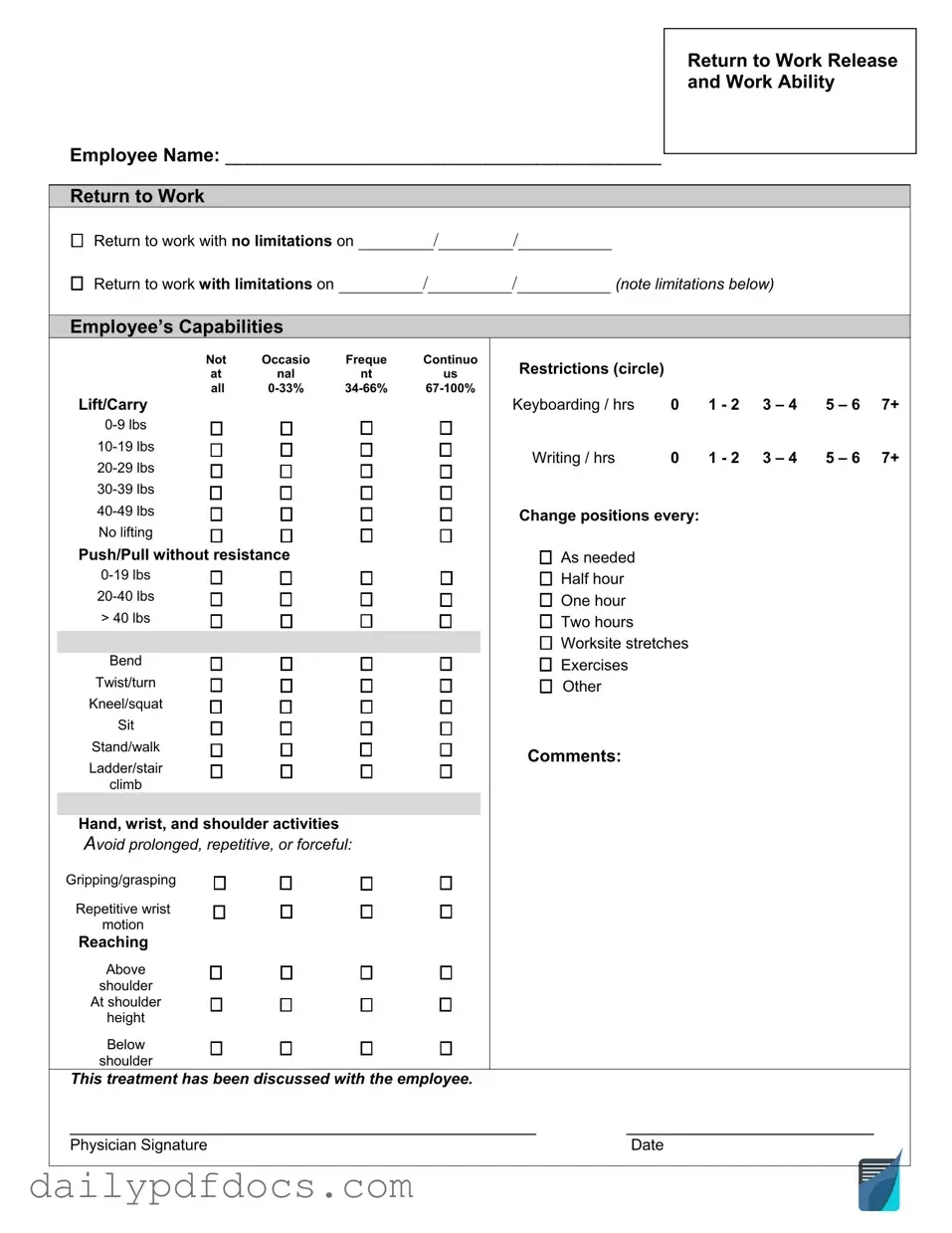What is a Work Release form?
A Work Release form is a document that allows individuals, typically those who are incarcerated, to leave a correctional facility temporarily for employment purposes. This form ensures that the individual can work while still fulfilling their legal obligations. It helps promote rehabilitation and reintegration into society by providing a structured way to gain work experience.
Who needs to fill out a Work Release form?
Individuals who are currently serving time in a correctional facility and wish to obtain permission to work outside of the facility need to fill out a Work Release form. This process may also involve approval from a parole officer or other supervising authority.
What information is required on the Work Release form?
The Work Release form typically requires personal information such as the individual's name, identification number, and contact details. It may also ask for details about the job, including the employer's name, address, and contact information, as well as the hours of work and the nature of the job.
How is the Work Release form submitted?
The submission process can vary by facility. Generally, the completed Work Release form must be submitted to the facility's administration or designated officer. It is essential to follow the specific procedures outlined by the correctional institution to ensure proper processing.
What happens after the Work Release form is submitted?
Once the Work Release form is submitted, it will be reviewed by the appropriate authorities. They will assess the application based on various factors, including the individual’s behavior, the nature of the job, and the potential benefits of employment. Approval or denial will be communicated to the individual.
Can a Work Release be revoked?
Yes, a Work Release can be revoked if the individual fails to comply with the terms set forth in the approval. Violations may include not reporting to work, engaging in illegal activities, or failing to return to the facility on time. If revoked, the individual may face additional consequences.
Are there any restrictions on the type of work allowed?
Yes, there are usually restrictions on the type of work that can be performed under a Work Release program. Generally, jobs that involve illegal activities, high-risk environments, or positions that may compromise public safety are not permitted. The specific guidelines will depend on the facility’s policies.
How long can someone participate in a Work Release program?
The duration of participation in a Work Release program varies by facility and individual circumstances. Typically, it is based on the length of the sentence, behavior, and compliance with program rules. Extensions may be requested, but they must be approved by the relevant authorities.
What are the benefits of a Work Release program?
Participating in a Work Release program offers numerous benefits. It allows individuals to gain valuable work experience, earn income, and develop skills that can aid in their reintegration into society. Moreover, it can foster a sense of responsibility and improve self-esteem.
Can family members or friends help with the Work Release process?
Yes, family members or friends can assist by providing support during the application process. They may help the individual find suitable employment opportunities or gather necessary documentation. However, all communications and actions must comply with facility rules and regulations.

